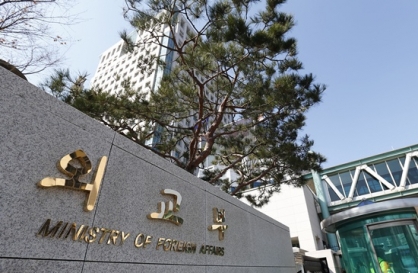[Yu Kun-ha] Time to end life support for zombie firms
By Korea HeraldPublished : April 6, 2014 - 20:22
Economists have shown that one way to spur productivity growth of an industrial sector is to clear it of “zombies” ― unproductive and unprofitable companies that need support from their creditors or the government to stay afloat.
These nonviable firms hinder a more efficient allocation of resources. By continuing to operate, they use up financial, physical and human resources that could be allocated to more productive companies.
 Furthermore, they depress economic activity by making it difficult for healthy firms to grow rapidly, increase profits and investment, and create jobs. They also block start-ups with new technologies from entering the market. In a word, they impede the process of creative destruction.
Furthermore, they depress economic activity by making it difficult for healthy firms to grow rapidly, increase profits and investment, and create jobs. They also block start-ups with new technologies from entering the market. In a word, they impede the process of creative destruction.
As a result, the presence of zombie firms harms the productivity of an industry. If there is a large presence of zombie companies across industrial sectors, the economy as a whole will suffer. So weeding out zombies is essential to make the economy run efficiently.
However, this is easier said than done. In the first place, banks have little incentive to kill zombies off. Banks are required to keep their capital ratios high. If they stop providing support to hopeless companies and let them go belly up, they have to set aside more reserves to cover the loans extended to them. This weighs on their balance sheets and lowers their capital ratios.
Thus, in many cases, banks choose to keep their troubled corporate clients going by continuing to provide subsidized loans. This practice, called “evergreening,” spares them the trouble of recognizing losses and having to find ways to keep their capital ratios intact.
Eliminating zombies is a tough task for financial regulators as well, because of the pain it inflicts on employees of the affected firms. Pushing zombies into bankruptcy is an economically necessary decision, but it cannot be made without a political price.
The difficulty of removing insolvent companies has been well illustrated by the Japanese government in recent years. A large number of Japanese firms became zombies following the collapse of the asset prices in the early 1990s and subsequent recession.
But the Japanese government had long allowed them to survive on support from their creditor banks. In 2002, it told banks to get tough on them and shed nonperforming loans. But it had to reverse policy following the collapse of Lehman Brothers in September 2008.
In 2009, the Japanese government introduced a law requiring financial institutions to respond favorably to loan restructuring requests from small and medium-sized businesses.
Under the law, the financial authority further softened its inspection manual to allow financial institutions to classify a company’s borrowing as normal if there was a good prospect that it would draw up a feasible and comprehensive recovery plan.
Note that what was required was not the existence of a highly convincing turnaround plan; a mere pledge to draft such a scheme was sufficient. As a result, virtually every company that sought assistance could get it.
The lax regulation also drastically reduced the amount of restructured loans at Japanese banks. But this did not necessarily mean a corresponding reduction in the number of zombie companies.
On the contrary, the problem has become more serious. Now the administration of Prime Minister Shinzo Abe faces a daunting challenge. Abe has been seeking to resolve the problem by boosting the Japanese economy, hoping that a rising tide would lift all boats. But the problem is that the much expected rising tide will not come unless zombies are weeded out in the first place.
The Korean government faces a similar problem. Before the eruption of the global financial crisis in 2008, the International Monetary Fund had consistently advised it to promote corporate restructuring to unleash the creative forces of the economy.
But the government had been reluctant to embrace this advice. Then the eruption of the global financial crisis in 2008 forced it to ease monetary policy and provide blanket liquidity support to domestic companies.
Despite such measures, Korean companies’ profitability and financial soundness has continued to worsen amid the persistent uncertainty in the global economic environment and the slow recovery of the domestic economy.
In the 2013 Financial Stability Report, the Bank of Korea noted that the number of listed companies unable to cover their interest expenses with operating revenues had increased sharply.
Among large enterprises, the proportion of firms with an interest coverage ratio below 100 percent rose to 29.1 percent in the first half of 2013 from 26.2 percent a year ago.
The problem has recently manifested itself in the form of severe liquidity shortages at major business groups. STX and Tongyang have already collapsed under heavy debt, while Dongbu, Hanjin and Hyundai Group are under pressure to straighten out their balance sheets by disposing of valuable assets.
It is not easy for banks to force these powerful conglomerates to restructure their business portfolios to cut their large debt loads to manageable levels. But they have to if they want to avoid being forced to recapitalize themselves due to losses from their corporate clients.
The liquidity problems at large corporations deserve attention as they could pose, if left unaddressed, systemic risk. But these big companies are expected to be able to sort out their problems by selling off some of their assets.
For financial regulators, the SME sector poses a more tough challenge. The BOK’s report showed that the proportion of SMEs that could not pay interest with operating income had reached dangerous levels: It shot up from 38.9 percent in 2012 to 43.7 percent in 2013.
SMEs have long been seen as underdogs that deserve support from banks or the government. As such, it is politically suicidal to call for discontinuing support for SMEs, regardless of their viability.
Successive governments have provided generous support to SMEs as that made political sense. But their reckless support programs gave many zombies a new lease on life at the expense of more productive companies.
In Korea, SME productivity is much lower than that of large corporations. One reason is that big companies underwent sweeping restructuring in the wake of the 1997-98 Asian financial crisis, while SMEs have never faced such pressure.
President Park Geun-hye recently unveiled a three-year plan for economic innovation. The plan aims to improve productivity to ensure that the nation’s potential growth rate rebounds to the 4 percent range from the present 3.5 percent.
For this, the plan calls for regulatory reform, overhaul of public institutions and fostering venture companies. It needs to include corporate restructuring, especially restructuring of the SME sector, to set in motion the forces of creative destruction.
By Yu Kun-ha
Yu Kun-ha is chief editorial writer of The Korea Herald. He can be reached at khyu@heraldcorp.com. ―Ed.
These nonviable firms hinder a more efficient allocation of resources. By continuing to operate, they use up financial, physical and human resources that could be allocated to more productive companies.
 Furthermore, they depress economic activity by making it difficult for healthy firms to grow rapidly, increase profits and investment, and create jobs. They also block start-ups with new technologies from entering the market. In a word, they impede the process of creative destruction.
Furthermore, they depress economic activity by making it difficult for healthy firms to grow rapidly, increase profits and investment, and create jobs. They also block start-ups with new technologies from entering the market. In a word, they impede the process of creative destruction.As a result, the presence of zombie firms harms the productivity of an industry. If there is a large presence of zombie companies across industrial sectors, the economy as a whole will suffer. So weeding out zombies is essential to make the economy run efficiently.
However, this is easier said than done. In the first place, banks have little incentive to kill zombies off. Banks are required to keep their capital ratios high. If they stop providing support to hopeless companies and let them go belly up, they have to set aside more reserves to cover the loans extended to them. This weighs on their balance sheets and lowers their capital ratios.
Thus, in many cases, banks choose to keep their troubled corporate clients going by continuing to provide subsidized loans. This practice, called “evergreening,” spares them the trouble of recognizing losses and having to find ways to keep their capital ratios intact.
Eliminating zombies is a tough task for financial regulators as well, because of the pain it inflicts on employees of the affected firms. Pushing zombies into bankruptcy is an economically necessary decision, but it cannot be made without a political price.
The difficulty of removing insolvent companies has been well illustrated by the Japanese government in recent years. A large number of Japanese firms became zombies following the collapse of the asset prices in the early 1990s and subsequent recession.
But the Japanese government had long allowed them to survive on support from their creditor banks. In 2002, it told banks to get tough on them and shed nonperforming loans. But it had to reverse policy following the collapse of Lehman Brothers in September 2008.
In 2009, the Japanese government introduced a law requiring financial institutions to respond favorably to loan restructuring requests from small and medium-sized businesses.
Under the law, the financial authority further softened its inspection manual to allow financial institutions to classify a company’s borrowing as normal if there was a good prospect that it would draw up a feasible and comprehensive recovery plan.
Note that what was required was not the existence of a highly convincing turnaround plan; a mere pledge to draft such a scheme was sufficient. As a result, virtually every company that sought assistance could get it.
The lax regulation also drastically reduced the amount of restructured loans at Japanese banks. But this did not necessarily mean a corresponding reduction in the number of zombie companies.
On the contrary, the problem has become more serious. Now the administration of Prime Minister Shinzo Abe faces a daunting challenge. Abe has been seeking to resolve the problem by boosting the Japanese economy, hoping that a rising tide would lift all boats. But the problem is that the much expected rising tide will not come unless zombies are weeded out in the first place.
The Korean government faces a similar problem. Before the eruption of the global financial crisis in 2008, the International Monetary Fund had consistently advised it to promote corporate restructuring to unleash the creative forces of the economy.
But the government had been reluctant to embrace this advice. Then the eruption of the global financial crisis in 2008 forced it to ease monetary policy and provide blanket liquidity support to domestic companies.
Despite such measures, Korean companies’ profitability and financial soundness has continued to worsen amid the persistent uncertainty in the global economic environment and the slow recovery of the domestic economy.
In the 2013 Financial Stability Report, the Bank of Korea noted that the number of listed companies unable to cover their interest expenses with operating revenues had increased sharply.
Among large enterprises, the proportion of firms with an interest coverage ratio below 100 percent rose to 29.1 percent in the first half of 2013 from 26.2 percent a year ago.
The problem has recently manifested itself in the form of severe liquidity shortages at major business groups. STX and Tongyang have already collapsed under heavy debt, while Dongbu, Hanjin and Hyundai Group are under pressure to straighten out their balance sheets by disposing of valuable assets.
It is not easy for banks to force these powerful conglomerates to restructure their business portfolios to cut their large debt loads to manageable levels. But they have to if they want to avoid being forced to recapitalize themselves due to losses from their corporate clients.
The liquidity problems at large corporations deserve attention as they could pose, if left unaddressed, systemic risk. But these big companies are expected to be able to sort out their problems by selling off some of their assets.
For financial regulators, the SME sector poses a more tough challenge. The BOK’s report showed that the proportion of SMEs that could not pay interest with operating income had reached dangerous levels: It shot up from 38.9 percent in 2012 to 43.7 percent in 2013.
SMEs have long been seen as underdogs that deserve support from banks or the government. As such, it is politically suicidal to call for discontinuing support for SMEs, regardless of their viability.
Successive governments have provided generous support to SMEs as that made political sense. But their reckless support programs gave many zombies a new lease on life at the expense of more productive companies.
In Korea, SME productivity is much lower than that of large corporations. One reason is that big companies underwent sweeping restructuring in the wake of the 1997-98 Asian financial crisis, while SMEs have never faced such pressure.
President Park Geun-hye recently unveiled a three-year plan for economic innovation. The plan aims to improve productivity to ensure that the nation’s potential growth rate rebounds to the 4 percent range from the present 3.5 percent.
For this, the plan calls for regulatory reform, overhaul of public institutions and fostering venture companies. It needs to include corporate restructuring, especially restructuring of the SME sector, to set in motion the forces of creative destruction.
By Yu Kun-ha
Yu Kun-ha is chief editorial writer of The Korea Herald. He can be reached at khyu@heraldcorp.com. ―Ed.
-
Articles by Korea Herald




![[Weekender] Korean psyche untangled: Musok](http://res.heraldm.com/phpwas/restmb_idxmake.php?idx=644&simg=/content/image/2024/05/02/20240502050841_0.jpg&u=)

![[Eye Interview] 'If you live to 100, you might as well be happy,' says 88-year-old bestselling essayist](http://res.heraldm.com/phpwas/restmb_idxmake.php?idx=644&simg=/content/image/2024/05/03/20240503050674_0.jpg&u=)











![[Herald Interview] Director of 'Goodbye Earth' aimed to ask how we would face apocalypse](http://res.heraldm.com/phpwas/restmb_idxmake.php?idx=652&simg=/content/image/2024/05/03/20240503050732_0.jpg&u=)
